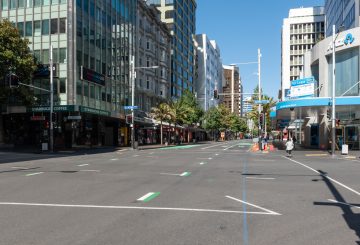Người New Zealand cần nhận thức rõ hơn về chất lượng không khí trong nhà và tác động của nó đối với sức khỏe, đặc biệt là vào mùa đông, thận trọng với Tổ chức Hen suyễn và Hô hấp NZ, Trung tâm Nghiên cứu Chất lượng Không khí Trong nhà của New Zealand và NIWA.
“Chất lượng không khí trong nhà có tác động đáng kể đến sức khỏe, đặc biệt là sức khỏe hô hấp của chúng ta”, Giám đốc điều hành Quỹ Letitia Harding cho biết.
“Tuần lễ chất lượng không khí thế giới vào tuần tới là kịp thời để nâng cao nhận thức của cộng đồng về những gì chúng ta đang hít thở tại nơi làm việc, trường học và nhà cửa của chúng ta, đồng thời kêu gọi hành động nhiều hơn để cải thiện chất lượng không khí trong nhà.”
Tiến sĩ Julie Bennett, một nhà nghiên cứu sức khỏe cộng đồng tại Đại học Otago và là thành viên của IAQRC, giải thích rằng nếu không có hệ thống thông gió thích hợp, các chất ô nhiễm có thể tích tụ đến mức cao bên trong.
“Mức độ ô nhiễm không khí trong nhà có thể cao gấp hai đến năm lần so với mức ngoài trời và trong một số trường hợp vượt quá mức ngoài trời của các chất ô nhiễm tương tự 100 lần.”
Một mối quan tâm khác là sự lây truyền các bệnh trong không khí trong không gian trong nhà thông gió kém.
Julie nói rằng để tạo ra sự khác biệt thực sự cho chất lượng không khí trong nhà, chính phủ cần phải hành động.
“Thiết lập một tiêu chuẩn cho chất lượng không khí trong nhà là bước đầu tiên rõ ràng.
Trong khi đó, các cá nhân có thể hành động để cải thiện chất lượng không khí trong nhà của họ.
Tuy nhiên, nếu bạn sống trong một khu vực có nhiều ô nhiễm không khí ngoài trời hoặc nếu bạn rất nhạy cảm với các chất ô nhiễm, bạn có thể muốn xem xét sử dụng hệ thống thông gió hoặc máy lọc không khí với bộ lọc HEPA,” Guy khuyên.
Nhà cung cấp hình ảnh: sunlive. co.nz





























































